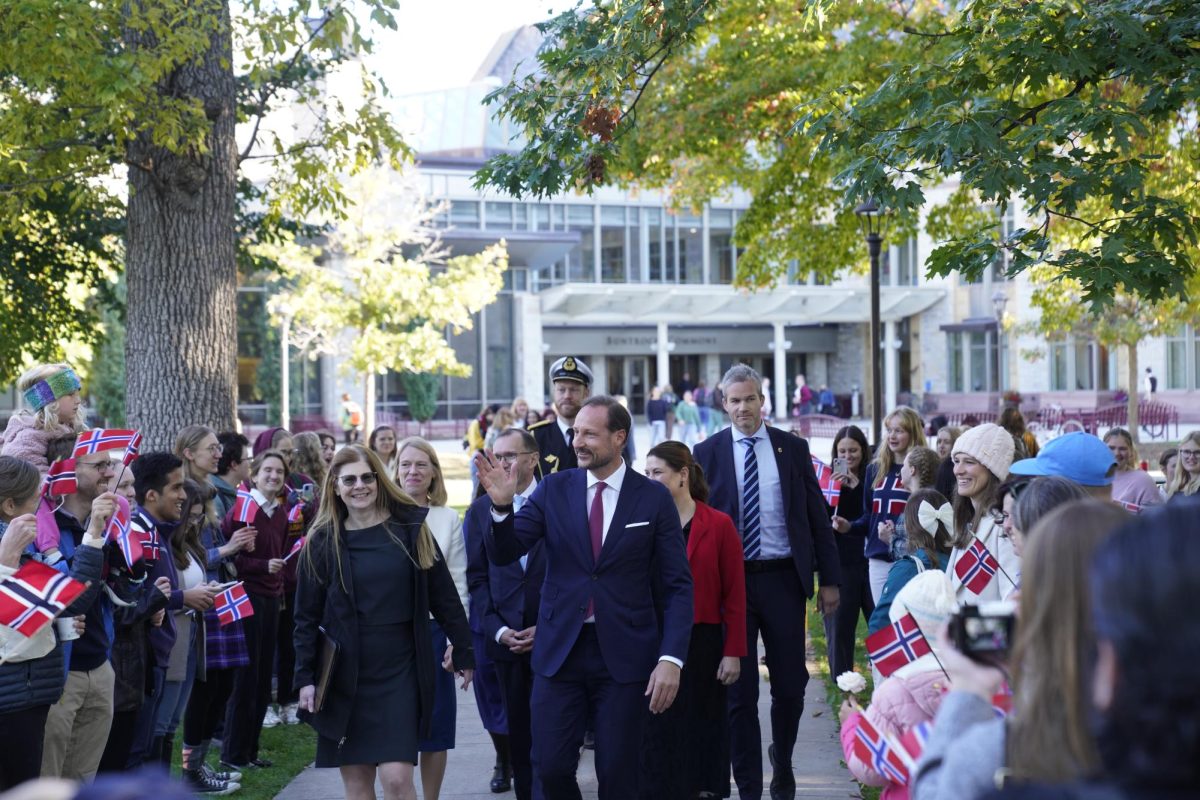Photo: St. Olaf College students and Northfield community members gather in the Sun Ballroom for the speaking event hosted by the Taylor Center Photo courtesy of Damian Waite
To kick off Native American Heritage Month, The Taylor Center for Equity and Inclusion hosted an event about the play “For the People,” to spark conversation about Indigenous representation in the arts on The Hill and beyond. “We live in this bubble, The Hill, and because of this, we don’t see the representation in Minnesota,” said Director of Taylor Center Martin Olague ’04.
The event hosted Guthrie actor Ernest Briggs as well as Adjunct Instructor in Theater Sara Pillatzki-Warzeha, who was an assistant director of the play “For the People.” Running at the Guthrie until Nov. 12, “For the People” had its world premiere as the Guthrie’s first Indigenous play since the theater’s conception 60 years ago.
The play takes place in Franklin Avenue, a Minneapolis neighborhood where many urban Natives reside. It is a niche story filled with deep-cut Minneapolis references, Native jokes, and personal anecdotes from Franklin Avenue. In the four to five years it took to develop the play, those involved with the production — such as Briggs — rewrote the play multiple times based on feedback from the urban Natives of Franklin Avenue to ensure that they were accurately representing the community.
“For the People” also featured Indigenous talent through the music, costumes, and set design. However, the importance of representation went beyond the play itself.
“It wouldn’t matter if the audience wasn’t Indigenous,” Pillatzki-Warzeha said at the event. When talking about the history of the Guthrie, she said that the theater was inaccessible to Indigenous people due to expensive show costs and unspoken rules such as clothing expectations. “I want to be able to take [my mom] here, where we come from, on Dakota land to watch a show,” Pillatzki-Warzeha said.
As members of the Guthrie’s Native Advisory Council, both Pillatzki-Warzeha and Briggs work with the theater to bring in more Indigenous stories and create a more welcoming space for those typically not represented in traditional theater.
“In order for colonization to continue and to cause harm, you have to believe that [Indigenous People] don’t exist or they need saving,” Pillatzki-Warzeha said. By sharing Native stories, art, and jokes, “For the People” brings an indigenous narrative to the theater world, an art form that heavily features colonial narratives. It creates a space for celebration in a place where Indigenous peoples are normally not welcomed.
The future of “For the People” is unknown. The Guthrie does not have the rights to the play, so there are currently no other productions planned for the show. Production members are advocating for people to contact their local theaters to show “For the People” and keep the play alive. “No other productions are planned right now, so contact your local theater and tell them you want them to do this play,” wrote “For the People” playwright Larissa Fasthorse in an Instagram post. Fasthorse is the first Native writer to be on Broadway.
In the discussion portion of the event, an audience member asked whether or not the St. Olaf College Theater Department will partake in the movement of Indigenous stories being told in theaters. In her response, Pillatzki-Warzeha said she has asked and is waiting for a response. “You can’t just do a land acknowledgment and not do the work or else it won’t mean anything,” Pillatzki-Warzeha said.
The question remains: will it take St. Olaf College another 60 years to tell Indigenous stories?







